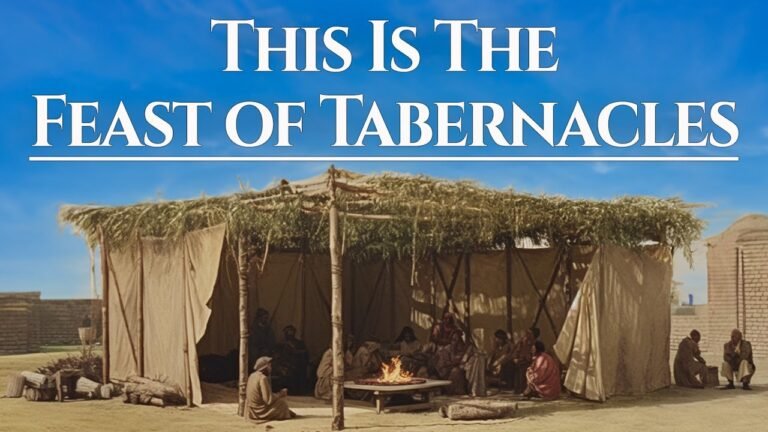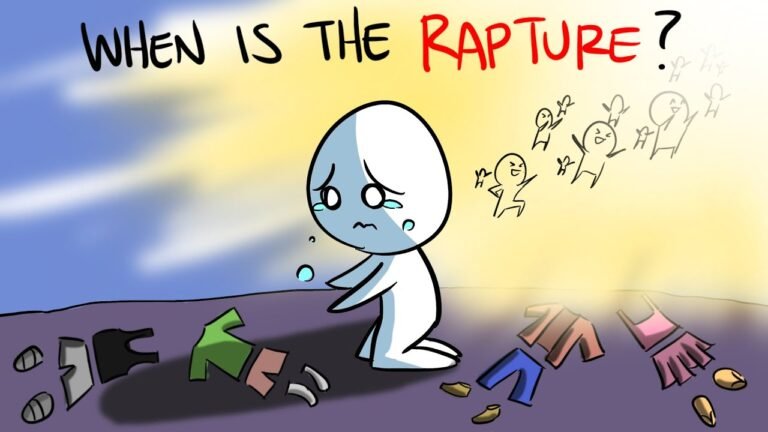The Significance of the Three Red Heifers in Biblical Prophecy
In a remarkable turn of events, the arrival of three red heifers has captured global attention, intertwining ancient prophecy with modern-day intrigue. These rare animals, deemed significant in various religious traditions, have sparked discussions about their potential role in fulfilling biblical predictions and the implications for faith communities worldwide. As experts and enthusiasts alike delve into the historical and cultural significance of these heifers, the world watches closely, wondering what this unprecedented occurrence might mean for the future.
What significance do the 3 red heifers hold?
The 3 red heifers are significant in Jewish tradition for their role in ritual purification and the potential rebuilding of the Third Temple in Jerusalem.
What is the significance of the red heifer in the Bible?
In biblical symbolism, the red heifer holds profound significance, representing purity and sacrifice within the sacrificial system of ancient Israel. This unblemished animal was used in rituals for purification, illustrating the need for atonement and the restoration of spiritual cleanliness. Its unique characteristics set it apart, making it a vital element in the understanding of sin and redemption.
Prophetically, the red heifer points to Yeshua (Jesus) the Messiah, embodying the ultimate sacrifice for humanity. Just as the heifer was without defect, Jesus lived a perfect, sinless life and willingly bore the sins of the world at His crucifixion. This act of selfless love enables believers to attain righteousness, reinforcing the transformative power of faith and the promise of redemption through Christ.
What does the red heifer ritual entail?
The red heifer ritual holds a significant place in Jewish history, representing a profound method of restoring ritual purity. This ancient practice involved the slaughter and burning of an unblemished red heifer, an animal that had never been yoked, as detailed in Numbers 19. This unique ceremony was essential for purifying individuals who had become unclean due to contact with the dead, ensuring their reintegration into the community. Additionally, it extended to the purification of certain spoils of war and captives, highlighting its importance in maintaining spiritual cleanliness and societal order.
Has the red heifer been located?
In 2022, significant attention turned to Israel with the arrival of five red heifers from a Texas ranch, sparking excitement among those who believe these animals hold prophetic significance. Currently housed in an archaeological park adjacent to Shilo, an Israeli settlement near Nablus, these heifers represent a pivotal moment in religious and cultural discourse, intertwining themes of tradition and modernity. Their presence has not only reignited discussions about ancient rituals but also highlights the complex dynamics of the region, drawing both curiosity and controversy from around the world.
Unveiling Ancient Prophecies: The Role of the Red Heifers
Throughout history, the emergence of the red heifer has captivated religious scholars and laypeople alike, symbolizing purity and divine promise. In ancient texts, these creatures are linked to the ritual of purification, particularly in the context of the Jewish Temple. Their significance transcends mere agriculture; they embody a profound connection to faith, tradition, and the longing for redemption. As the world grapples with modern challenges, the red heifer serves as a reminder of enduring beliefs and the hope for spiritual renewal.
In recent years, discussions surrounding the red heifers have intensified, especially with reports of their breeding in Israel. Many see this as a potential precursor to the rebuilding of the Third Temple, a pivotal event in Jewish eschatology. This growing fascination with the red heifer reflects a broader interest in ancient prophecies and their implications for the future. As these prophecies resurface in contemporary discourse, the red heifer stands at the crossroads of past and future, inviting us to explore the depths of tradition while contemplating the possibilities that lie ahead.
A Symbol of Purity: Understanding the Three Red Heifers
In ancient texts, the red heifer holds a significant role as a symbol of purity and renewal. According to biblical tradition, the ashes of a perfectly unblemished red heifer were used in purification rituals, allowing individuals to regain their spiritual cleanliness. This unique animal, characterized by its striking reddish-brown color and lack of any blemishes, has captivated the imaginations of many throughout history, representing a connection between the earthly and the divine.
The process of identifying and raising a red heifer is steeped in meticulous guidelines, as outlined in the Torah. Only those heifers that meet specific criteria—free from any physical imperfections and never having borne a yoke—are considered acceptable for this sacred purpose. This rigorous selection underscores the importance of purity in both the animal and the rituals surrounding it, reflecting a broader theme of seeking spiritual clarity in an often chaotic world.
In contemporary discussions, the concept of the red heifer continues to resonate, symbolizing hope and the possibility of renewal. Its significance extends beyond religious boundaries, inspiring a deeper understanding of purity and the human quest for redemption. As communities and individuals strive for spiritual growth, the legacy of the red heifer serves as a poignant reminder of the enduring power of faith and the pursuit of a clean slate.
Prophetic Significance: What the Red Heifers Mean for Today
The recent birth of red heifers in Israel has sparked significant interest and discussion among religious and cultural communities worldwide. These animals, described in ancient texts as essential for the ritual of purification, symbolize a return to ancient practices and beliefs. Their presence is viewed by many as a prophetic sign, suggesting a potential shift in spiritual dynamics and an awakening of faith among believers.
As discussions about the red heifers gain momentum, they evoke a sense of hope and expectation for a future transformation. For some, these heifers represent a pivotal moment in the fulfillment of biblical prophecies, signaling a time for spiritual renewal and cleansing. This growing interest taps into a deeper yearning for connection to heritage and tradition, prompting individuals and communities to reflect on their beliefs and the role of prophecy in contemporary life.
In an increasingly complex world, the red heifers serve as a compelling reminder of the enduring power of faith and tradition. Their significance transcends mere symbolism, inviting people to explore the intersection of ancient teachings and modern existence. As the narrative unfolds, many find themselves contemplating the implications of these events for their personal and collective spiritual journeys, ultimately encouraging a deeper engagement with the mysteries of faith and prophecy.
Connecting Faith and Prophecy: The Legacy of the Red Heifers
The recent return of red heifers to Israel has sparked renewed interest in their prophetic significance within Jewish tradition. These animals, deemed essential for temple purification rituals, are seen as a vital link between ancient practices and future religious aspirations. The fascination surrounding the red heifers transcends mere agricultural curiosity; it represents a deeper yearning for spiritual renewal and the restoration of sacred traditions.
As the world watches, the implications of these heifers resonate beyond the boundaries of scripture. Many believe that their presence heralds the potential for rebuilding the Third Temple, a pivotal event in Jewish eschatology. This belief fuels a sense of hope and anticipation among communities that view the red heifers as a tangible sign of divine intervention, bridging the gap between past prophecies and contemporary faith.
In a time marked by uncertainty, the legacy of the red heifers serves as a powerful reminder of the enduring connection between faith and prophecy. They embody a promise of renewal, inviting believers to reflect on their spiritual journeys and the collective aspirations for a brighter future. As discussions about their role intensify, the legacy of the red heifers continues to inspire dialogue around the importance of tradition, faith, and the quest for meaning in a rapidly changing world.
The arrival of the three red heifers has sparked renewed interest and debate within religious and agricultural communities alike, symbolizing a potential turning point in ancient prophecies and contemporary farming practices. As these remarkable animals capture the imagination and curiosity of many, they also invite us to reflect on the intersection of tradition and modernity, urging a deeper exploration of their significance in our evolving world. The journey of the red heifers is just beginning, and their impact may resonate far beyond what we can currently envision.







